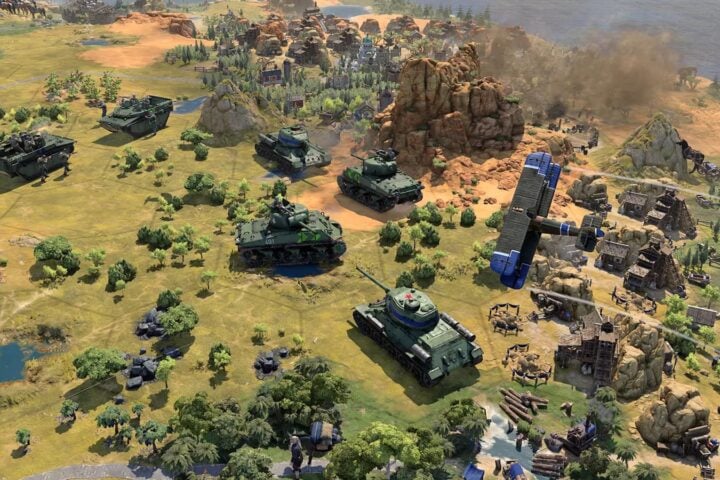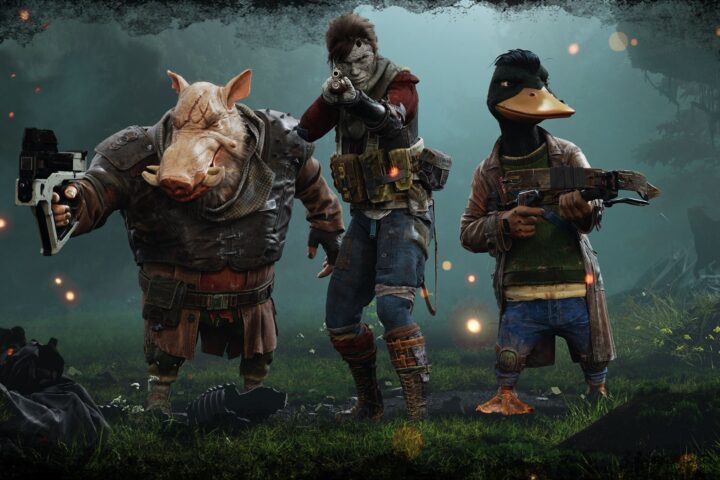For developer Haemimont Games, the year 2001 is a statement of purpose. With the much-belated Jagged Alliance 3, the Bulgarian game developer is calling back to the heyday of ultra-granular PC strategy games. That is, the kind that fell out of fashion before Firaxis’s XCOM revival stripped back their excesses in hopes of finding a broader audience.
Jagged Alliance 3, which arrives more than 20 years after the release of the seminal Jagged Alliance 2, is hardly ignorant of that game’s advances. But it’s designed to be a little more sprawling, favoring squad and inventory management while its mercenaries wage war with “action point” totals rather than modern XCOM’s streamlined allocation of two actions per turn.
The game’s clunky internet is nothing if not era-appropriate. From a fake browser, the player accesses the website for the Association of International Mercenaries (A.I.M.) and assemble a squad, paying day rates to colorful soldiers of fortune for them to fight in the fictional African country of Grand Chien. Your benefactor is the daughter of the country’s president, who’s been kidnapped by a shadowy major and taken to the far corner of the map screen that your squad must travel to, liberating outposts and diamond mines along the way.
In Jagged Alliance 3, the dozen or so action points that are available to a merc depends on a combination of their stats, skill, and overall morale. From that total, the points can be spent on movement, accuracy, and other actions, like firing a weapon, throwing an item, or surveying an area of the map, in order for the player to successfully take aim at a target during the enemy’s turn. And the cost of an action changes depending on the weapon or item involved.
For one, throwing a knife costs less than firing an assault rifle, though a knife has far less range. Thus, a mercenary like Keith “Blood” Hanson, with his large pool of action points and character-specific ability to throw an unlimited number of knives, is great for running up to the paramilitary force known as the Legion to take out its soldiers, but another character like the nervous medic Michael “MD” Dawson will be better off hanging back.
In contrast to the mooks of similar strategy games, each mercenary comes with a specific character portrait, unique perk, and specific distribution of eight stats. They’re also fully voiced, with a variety of barks and character interactions that are meant to assert their personalities and range from the amusing to the unspeakably obnoxious. The game’s sense of humor is often grating, reliant on groan-inducing pop-culture references and broken English, and in a way that feels unfortunately appropriate for a game set in 2001. But it’s also tough to argue with the results: Not once does its roster of cartoon mercenaries feel interchangeable, making it easy to derive a sense of accomplishment as you command them across Grand Chien.
As executed by the motley crew that you’ve assembled and defined roles for, the skirmishes in Jagged Alliance 3 are consistently intense and exciting. Maps range from more constrained affairs to much larger levels with multiple avenues of approach, allowing characters to sneak around to optimal positions in real-time before the shooting starts in earnest. When the game switches to its turn-based mode, you’re drawing from a wide pool of customizable firearms within destructible environments, aiming at different body parts from multiple levels of terrain.
The catch, though, is that Jagged Alliance 3 often withholds the information that many strategy games offer in order to inform your decision-making process. Most notably, there’s not a single hit percentage to be found when your mercs take aim at the enemy. Instead, you’re only shown positive and negative modifiers to your accuracy, each vaguely denoted by a plus or minus sign: range, weapon attachments, certain perks, mode of fire, medical condition, and more.
It’s a sound idea on paper, meant to force players to take chances and adapt to a situation rather than simply stare at numbers and try for the highest hit percentage. But in practice, the sheer lack of information is discouraging: With only vague enemy health descriptions and no indication of whether the accuracy penalty for targeting the head is worse than the one for targeting the arms or legs, I saw little reason to deviate from what I knew already worked.
Why take a chance on crippling an enemy that might die soon anyway when, as far as I knew, I could just take them out altogether? For as much as Jagged Alliance 3 got me to stop sweating percentage points, it also nudged me into a much more conservative style of play, where I avoided variables like destructible scenery only because I had no idea if they would work.
In other areas, the sheer granularity of certain mechanics similarly works against the more experimental play. You’re able to hire many more characters and split them into new squads, but I heavily favored one main, larger squad simply to avoid the tedium of coordinating multiple inventories. Managing one squad in Jagged Alliance 3 is already a cumbersome process, where you’re constantly juggling useful items and crafting materials between stashes across the world map. But each new squad means dealing with a new, separate reserve of ammunition and other supplies that can’t readily be transferred to other squads, so even something as obvious as hiring a reserve group to craft ammunition becomes an enormous headache.
Other UI irritations abound, serving only to further complicate an experience at odds with itself for how much information it wants to communicate at a given moment. On the whole, Jagged Alliance 3 lays some strong groundwork for the franchise’s resurgence, but it often feels like a series of individual victories that fail to work in concert for something greater.
This game was reviewed with code provided by Evolve PR.
Since 2001, we've brought you uncompromising, candid takes on the world of film, music, television, video games, theater, and more. Independently owned and operated publications like Slant have been hit hard in recent years, but we’re committed to keeping our content free and accessible—meaning no paywalls or fees.
If you like what we do, please consider subscribing to our Patreon or making a donation.




